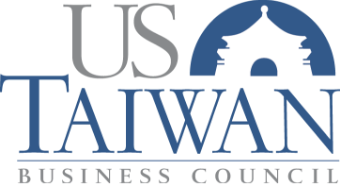Testimony:
Subcommittee on Asia and the Pacific
House Foreign Affairs Committee:
Renewing Assurances: Strengthening U.S.-Taiwan Ties
(Washington, D.C., June 15, 2017)
Written Testimony by Rupert Hammond-Chambers
Introduction
Taiwan remains a critical global partner for the United States. It is currently our 10th largest trading partner, ahead of India and other strategically important countries, and it serves as a critical node in the defense and security architecture of the U.S. across Asia.
Taiwan’s population of 23.5 million people is roughly the same as Australia, but the island sits on a land mass equivalent to 0.47% of that of Australia. In the absence of any significant natural resources, other than its people, Taiwan has built an economy surpassing US$474 billion in annual GDP, and foreign currency reserves surpassing US$440 billion. Taiwan was still receiving U.S. foreign aid in the early 1950s, but has since flourished as it opened its markets and its political system.
By any measure, Taiwan is a poster-child example of the success of post-World War II U.S. foreign policy and its support for the building of flourishing free market democracies. Taiwan is worthy of significant investment by the United States, not just to support the island but as a representation of America’s sustained commitment to the region.
In April 1979, the U.S. Congress passed the Taiwan Relations Act (TRA), embedding U.S. policy towards Taiwan into law and providing the framework for future support. Meanwhile, it also set important boundaries for behavior by the People’s Republic of China (PRC) after the U.S. switch in diplomatic recognition earlier that year.
Since 2005, however, the U.S.-Taiwan relationship has been on a steady decline. Successive Republican and Democratic administrations have downgraded the bar of support for the island in the face of an increasingly aggressive and hegemonic PRC.
The PRC campaign to undermine support for Taiwan continues apace, with a focus on linking China’s behavior on non-Taiwan matters – such as North Korea – to the willingness of the U.S. to curb its support for Taiwan in areas critical to Taiwan’s ongoing welfare, such as arms sales and expanded trade relations.
As the PRC’s economic and military power grows, the United States is increasingly challenged to assess whether it is willing to maintain its ongoing interest with Taiwan or if it will abdicate that leadership role in the hopes of moderating China’s behavior in other areas of national interest.
Trade & Economic Ties
The U.S. is Taiwan’s second largest trading partner behind only China, and the two have approximately US$66 billion in annual two-way trade. A strong and economically prosperous Taiwan is in the interests of the Unites States, and should be a core pillar of American support for the island.
The US-Taiwan Business Council (USTBC) believes that U.S. trade with Taiwan is mutually beneficial, despite the consistent trade deficit in goods in favor of Taiwan that has persisted for the last 30 years. Taiwan plays a tremendously important role both as a market for U.S.-made goods and as a manufacturing and innovation partner for U.S. businesses. Goods and services trade with Taiwan – along with extensive investments by Taiwan businesses in the U.S. – generally promotes economic growth in the United States and supports U.S. jobs across the country and in many industries. USTBC also believes that Taiwan is well placed to partner with the Trump Administration in exploring and partnering on new bilateral trade initiatives, including possibly signing a Fair Trade Agreement (FTA).
Taiwan’s economy has flourished, particularly since the 1980s, by positioning itself as a partner in manufacturing products with high quality and low cost. Our bilateral economic relations are primarily underpinned by Taiwan’s partnership with the U.S. in the development and production of information technology (IT) products, with the intellectual property for these products typically held by a third party.
For example, Apple’s primary production partner for its iPhones is Foxconn, a Taiwan company with large manufacturing investments both in China and across the globe. Its production prowess allows for Apple to produce, on a large scale, millions of devices that support its operating systems and applications. The device itself typically accounts for less than 20% of the final consumer price, with the remaining 80%+ going to the holders of the internal intellectual property. This arrangement has benefited all parties, and has created considerable wealth and productivity gains in both the U.S. and Taiwan.
However, Taiwan’s economy is currently at a crossroads. The tight operating margins of such contract manufacturing has placed considerable pressure on Taiwan industry to innovate, to invest more in research and development, and for the government of Taiwan to improve the start-up environment for entrepreneurs. Taiwan’s rapid pace of development has now slowed as companies have matured. In addition, the emergence of new, innovative Taiwan businesses has also slowed dramatically.
(See attachment for full text)
